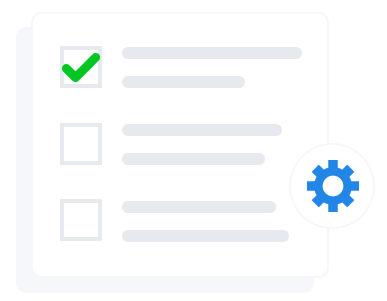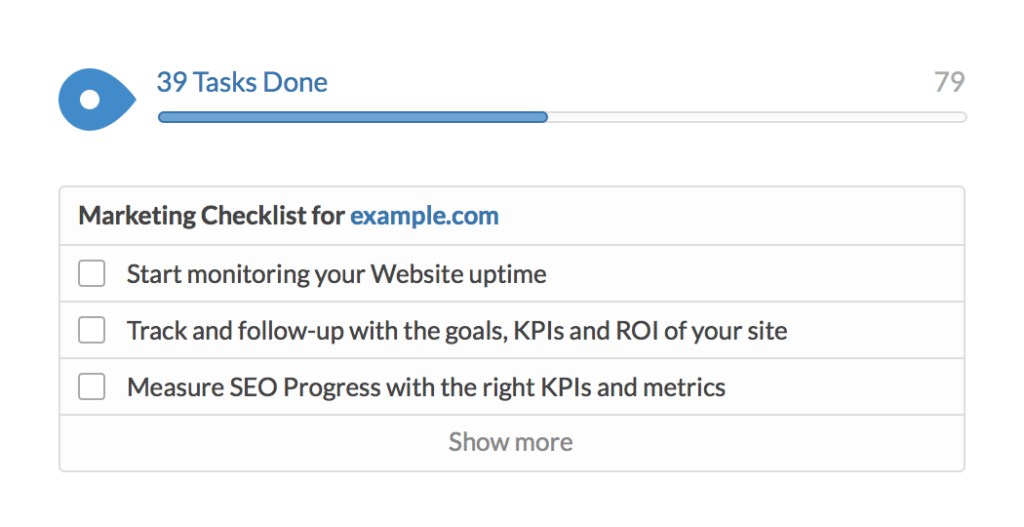When developing a lead generation strategy, many factors go into leads. One of the most important considerations in both website development and lead generation is the creation of landing pages that are both SEO friendly and will motivate visitors to act. How can you do this? Where should you start? Read on to see the guide to landing pages.
With special thanks to Tuesday Marketing Notes author Eric Gagnon, we would like to share with you Developing Effective Landing Pages for Successful Lead Generation.
Landing Pages for Lead Development
Previously, we’ve covered the techniques for writing effective, response-generating text ads for Google AdWords and other keyword search marketing programs. This week, we’ll cover the very important techniques required to develop effective landing pages to get keyword searchers to sign up for your free offer or information deliverable, and to become prospects in your AdWords lead generation programs.
Related: Inbound Marketing Survey Findings
Landing pages are used in Google AdWords marketing programs to capture contact information from prospects, which account for the majority of AdWords programs used in B2B marketing. Your landing page is crucial in determining the final conversion rate of your AdWords program: It describes and sells your product, white paper, report, eBook or other information premium or promotional offer, provides additional detail on your company and product, and contains fill-in forms for capturing the prospect’s contact information. After the prospect fills in these forms, the information premium is downloaded, or the searcher receives the information on the promotional offer.
Landing Pages: The Most Important Link in the Chain of Your AdWords Campaigns
The vast majority of Google searchers who click on the link in your text ad and reach your landing page spend just a few seconds there, before leaving your Web site. According to the marketing research Web site MarketingSherpa.com, half of the Web visitors who reach a landing page spend just 8 seconds scanning it before they leave. Of those who remain, very few actually sign up on your landing page for your offer. If you assume a landing page with a conversion rate of just 25% (high for most AdWords programs), this still means that 75 out of every 100 users who clicked your ad still didn’t follow through on your offer.
Related: Building a B2B Lead Generation Strategy through Social Media
A prospect who clicks on your Google text ad or e-mail link skim-reads the text on your landing page, looks at the information you’re asking him/her to enter, and makes a final, gut-check decision on whether or not your offer is worth signing up for. If they sign up, they’re now a sales lead; if they don’t, they’re lost, and maybe lost forever. This is why it’s critical to develop and test landing pages that motivate searchers to take this last crucial step to fill in their contact information to receive your offer and become your prospect.
Why Doesn’t Your Landing Page Convert?
The two biggest reasons landing pages fail to generate sufficient response are:
1.) Providing too much or too little promotional copy on landing pages, where prospects don’t take the effort to review the copy or, conversely, the copy doesn’t clearly describe the product benefits and the offer (this, of course, assumes your copy is persuasive and motivates searchers to sign up as well);
2.) Asking the prospect to fill out too many entry fields for their contact information on the landing page. As marketers, we’re big-time data junkies, so we like to gather as much information as possible. For landing pages, however, ask for only the bare minimum amount of information you need for your own lead generation purposes. Usually, this is no more than name, company, and e-mail address; ideally, it’s no more than asking for the prospect’s e-mail address, and maybe their first and last name.
Related: Google Hummingbird Effects on SEO
When you develop landing pages for your own marketing programs, guard against providing too much or too little copy, and asking for too much contact information from your prospects. If you strike the right balance here, and you have a compelling information premium or offer, your landing pages will generate higher conversion rates. By testing different variations (see below), you can measure response to determine the best approach for your AdWords programs.
5 Landing Page Elements to Increase Lead Generation
Regardless of the promotion, or the product or service being marketed, landing pages that are successful in converting Web searchers into sales leads who sign up to receive your premium share the following key elements:
1.) Headline: The largest and most important element of a landing page: Usually a bold headline describing the main benefit of the information premium or promotional offer. You can also use a subhead below the headline to add more detail to your offer, or describe your product.
2.) Premium description (body copy) and premium graphic: Next to the headline, the body copy of the landing page describes the information premium, how and why it benefits the reader, and a bullet-point overview of its content. The most effective landing pages use the minimum amount of text necessary to describe the offer and the premium (200-300 words or less). An image of the premium (white paper, eBook, report, book, etc.) boosts response by showing the reader what they will receive if they enter their signup information on the page.
3.) Call-to-action and instructions: Tell your reader how to take the next step to receive the premium—what information they need to enter on your landing page, and what will happen next, in a bold, prominent line of text below or alongside the body copy.
4.) Sign-up entry boxes: To maximize response, collect only the minimal amount of contact information you need to fulfill the prospect’s request. If you’re sending out an information premium, this is usually no more than the Web searcher’s name and e-mail address. Optionally, you can include checkboxes for opt-in email newsletters, product announcements, etc. for readers to check to agree to receive these e-mail messages from your company. Also, and as we’ve already pointed out, remember that landing pages aren’t marketing research survey forms; conversion rates fall with each additional piece of information you request from the reader, and will drop substantially if you turn your landing page into a full-blown questionnaire;
5.) No-spam pledge: Promise your new prospect that you won’t rent out, spam, or otherwise abuse their e-mail address.
The graphic below shows a general visual layout and proportions for an effective landing page:
Thank You Page
After your new contact has entered their information and downloaded your information premium, display a “Thank You” page acknowledging receipt of the prospect’s contact information, and thanking the prospect for signing up. As well, let them know when they’ll receive their first issue of your email newsletter (if they signed up for it), and anything else they need to know. From this page, you can also display a link to the next page on your site you’d like the user to access, to learn more about your product.
Importing Prospect Contact Information to Your Company’s CRM System
When developing landing pages, make sure to generate “web-to-lead” HTML code, a feature available in some CRM systems, for your landing page. Web-to-lead features provide HTML code and programming that captures contact information, entered by prospects, and imports this information directly to the leads database in your CRM system. This eliminates the intermediate steps of re-formatting files from a Web server and then re-importing them into your leads database.
Web-to-lead features generally consist of copying specially-generated HTML code into the HTML code of landing pages and, once done, make it an easy and automatic process to capture prospect contact information, and then track and measure conversions from your landing pages for your lead generation and lead development programs.
Google’s Website Optimizer
If you aren’t sure whether one landing page headline works better than another, or to test any landing page element in your AdWords campaigns, use Google’s Website Optimizer to test different variations of landing pages to determine the best conversion rates for your AdWords programs. You can test long copy vs. short copy, one headline vs. another, or any other landing page variation you believe might increase your AdWords conversion rates.
Keyword Search Marketing: You’ll Never Know Unless You Try
Whether Google AdWords and similar keyword search advertising methods will be effective as viable lead generation methods for your marketing program depends on the nature of your industry and your product. Most important, success with AdWords depends on the number of potential prospects in your market who are using the Internet to search for products like yours.
Related: Link Building: Cautionary Tales and Best Practices
One thing is certain, however: As more and more business-to-business buyers look first to the Internet, instead of trade publications or other traditional B2B media, keyword search advertising will only grow in importance for lead generation in your company’s marketing program. This fact alone makes it essential for you to get in this game to determine if you can develop keyword search ad programs like AdWords into an important part of your company’s lead generation program—and you can never be certain unless you test keyword search advertising in your own marketing program.
If you aren’t generating leads, your competitors are. Don’t miss out on leads by failing to optimize your landing page for conversions.
Modern Marketing Partners, leading Chicago B2B Marketing Agency, understands the value of building a landing page from the bottom up, and is ready to assist your strategy in lead generation. Contact MMP and see how proper A/B Testing and Development can assist your long term strategy.


